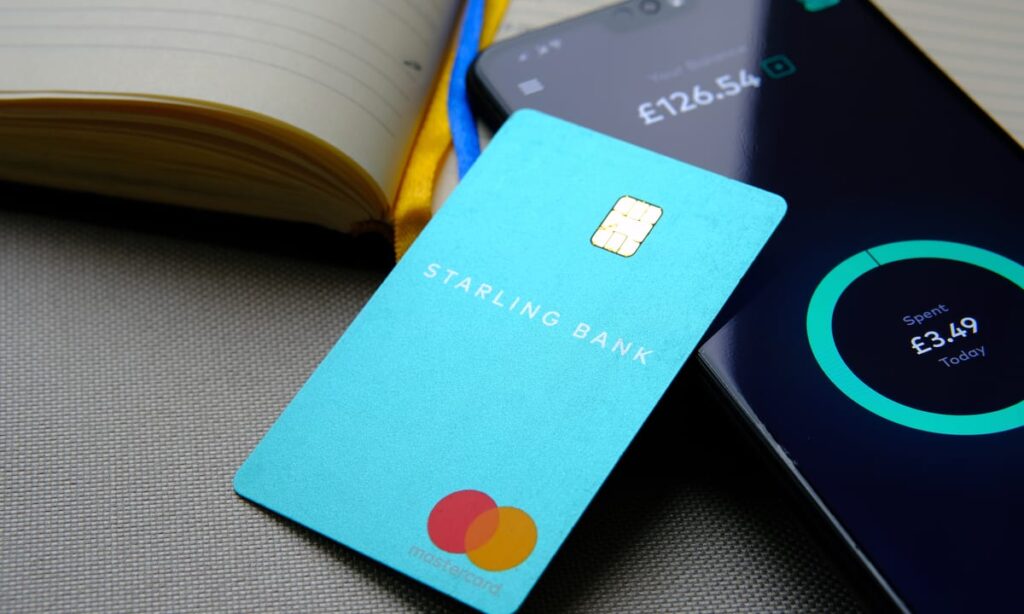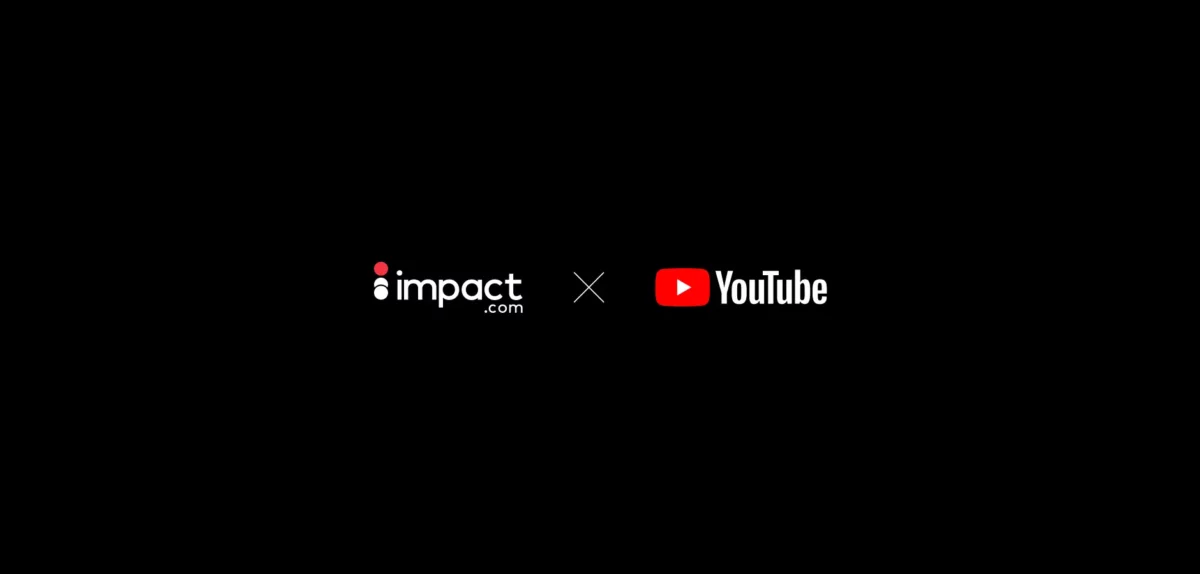The main ingredient: Partnerships offers a trustworthy, low-risk source of revenue
Chefs often reinvent classic recipes by adding a flavor or technique twist to excite and capture the tastebuds of food enthusiasts. Similarly, gradual changes in customer attitudes require brands to look for techniques other than traditional sales and marketing to adapt and evolve. Brands search for ways to recapture customer trust and support business revenue because 69 percent of shoppers no longer trust advertising.
Enter partnerships — an innovative and trustworthy revenue channel. Partnerships have earned their status as a reliable source of revenue for brands of all sizes in every industry.
From Ticketmaster to Starling Bank to Mapiful, this guide highlights 11 incredible partnerships that businesses have formed to:
- Grow brand awareness
- Reach new audiences
- Improve customer retention
- Strengthen market share
- Increase conversion rate
The sweet spot with partnership marketing
Like a combination of ingredients that creates the perfect flavor, partnerships entail collaborative, mutually beneficial relationships between brands, businesses, individuals, and even communities. Brands partner with other brands, content creators, and business leaders to tap into new audiences and earn their trust faster and more effectively.
Partnerships allow brands to reach each other’s audiences in creative, authentic ways, such as through valuable content, advantageous shopping deals, impeccable customer experiences, and more.
Sweeten things up with different partnership types
Many companies form creative and effective partnerships. Customization of partnership formats and logistics depends on a brand’s goals and industry. Some of the most common partnership types include:
- Strategic brand-to-brand partnerships help businesses in complementary industries. Their similar customer needs benefit each other. These partnerships can become very creative, as you’ll learn in the examples below.
- Native software integrations and mobile partnerships also fall into the strategic brand-to-brand category. Brands integrate products or services into mobile apps or software experiences, so users get more value from their interactions with apps or software.
- A type of strategic brand-to-brand partnership, loyalty programs connect retailers with other enterprises (websites, publishers, etc.) and help consumers gain shopping rewards.
- Brands and influential social media publishers form influencer partnerships — popular among businesses that want to connect with younger audiences.
- Corporate social responsibility (CSR) and charity partnerships help brands embrace a purpose-driven mission and support causes that align with their customers.
- Affiliate partnerships help drive traffic to brand websites. Traditional affiliates provide discounts and purchase incentives to members of their audience interested in the partner brand. Affiliates typically receive a commission for sales and conversions they generate for a brand.
- Brands form content partnerships (also known as commerce content partnerships) when they collaborate with large publishers that create authentic and informative content for their audiences. The publisher in a commerce content partnership curates high-quality editorial content and leverages audience trust to avoid traditional advertisements.
- Ambassador partnerships often represent individuals who are fans of a brand or an organization. They can encompass any format that supports ambassadorships, from customer referral programs to businesses or individuals that refer customers, friends, or family members to a brand, product, or service.
Taste success: 11 brands that enjoyed a bigger slice of the pie with partnerships
Whatever the desired outcome, whether brand awareness or increased revenue, an investment in partnerships provides the perfect catalyst to drive business growth. Enjoy a slice of success (or two…or eleven!) and use the inspiring stories that follow to determine what it takes to thrive in partnership marketing. You’ll also discover how businesses in wide array of industries use partnerships to grow revenue.
Affiliate partnerships in retail
1. Love, Bonito scales its partner program to boost new orders by 20 percent
The popular Asian fashion brand Love, Bonito instills confidence in women through its products, mission, and story. Partnerships became the company’s ultimate strategy when it wanted to increase brand awareness internationally.

To achieve this goal, Love, Bonito launched an affiliate program to tap into the Asian expat community in countries like the United States and Australia.
Love, Bonito chose impact.com to manage its new affiliate program. The platform’s functionality and automation features helped the team set up different commission structures for new and existing customers. The features also assisted Love, Bonito’s efforts to shift payouts to fit the program’s changing goals and analyze the results of its work (and its partners’ work).
Thanks to this thoughtful approach, Love, Bonito saw tremendous growth. The brand’s partners began contributing as much as 20 percent of total new orders within a year.
The team saw 1,700 percent month-over-month growth in active partners and 253 percent quarter-over-quarter revenue growth. Love, Bonito now relies on automation to optimize and scale its partnerships. It tests local target audiences and continually grows customer reach across the globe.
2. Drop grows new customers by 15 percent through program automation
The retail rewards app Drop partners with brands to create more rewarding customer shopping experiences. The Drop team aimed to improve customer acquisition and succeed with premium content publishers. However, most of its processes (e.g., communication, contracting, payouts) were manual, and the results were unpredictable.

The Drop team chose impact.com’s partnerships platform to streamline program logistics and switched to a cost-per-action (CPA) model that would solve those two challenges. The CPA model enabled more transparent and performance-motivated partnerships.
The new approach proved worthwhile. Thanks to automation, Drop’s affiliate partners began to bring in as much as 15 percent or more new customers. The team also saw a 111 percent increase in new customer loyalty as more and more shoppers chose to use Drop to reap shopping rewards.
The CPA model improved revenue predictability. With partners working toward better conversions, the Drop team gained higher output from marketing dollars spent.
3. Fanatics improves partner engagement by 100 percent to drive revenue
Fanatics, the major licensed sports merchandise retailer, manages more than 28 affiliate programs with 50k publishers. The team’s work with top-performing affiliates brought positive results.

However, the team couldn’t dedicate much time to working with the rest of the partner network. Fanatics only had resources for a non personalized weekly newsletter that didn’t motivate partners to deliver as much value as possible.
To increase partner engagement, the Fanatics program manager segmented the brand’s 50k+ partner database based on team, topics, and interests in relation to Fanatics products.
Fanatics categorized its partner network and contacted specific partners based on interests or sports micro-moments. These hyper-targeted campaigns felt more personalized because they were closely associated with each partner’s interests.
In addition to segmentation, Fanatics made communication more efficient with automated workflows from Mediarails by impact.com. Instead of writing and sending individual emails, the Fanatics team could draft and send thousands of emails within minutes.
Fanatics now sends 15 times more outreach events a week in addition to its weekly newsletter. Thanks to segmentation and email workflow automation, Fanatics saw a 100 percent increase in partner engagement and earned more revenue from its partnerships.
Affiliate partnerships in tourism
4. TUI’s switch to a partnership platform leads to a 49 percent revenue increase
TUI, an international travel agency with years of partnership experience, decided to overhaul and refresh its UK partnership program in 2019.

As part of its strategy, the team switched from affiliate network-managed services to impact.com’s self-managed partnerships platform. TUI’s goal was to migrate existing partners and processes seamlessly. The team also sought to complete a partner audit, review program processes, and automate as many of them as possible.
The overhaul of the UK’s largest affiliate program was a success. It brought a 49 percent increase in revenue within the first month. TUI attributed its success to:
- A solid communication plan
- Partnership optimization by reducing inactive partners by 70 percent
- Change in commission structure
- Improved reporting
Updated partnerships led to a 30 percent increase in passenger volume and a reduction in CPA.
Affiliate partnerships in finance
5. M1 Finance generates 10 percents new customers through partner growth
M1 Finance, the free investment banking app, knew potential clients sought investment and savings tips. The M1 team enlisted the help of partners to spread the word about its app.
The first step was to migrate M1 Finance’s existing brand ambassadors to its new partnerships platform — impact.com. The team then began to upgrade program processes at every stage of the partnership life cycle, from partner recruitment to payouts. It specifically focused on simplifying the onboarding process for new partners and empowering them to analyze performance using the platforms’ reporting tools. Consequently, M1 Finance restructured its payout system and automated manual processes, which left room for strategic development.
As a result, an influx of new partners was ready to promote the app. M1 Finance partners grew 300 percent within a year, generating 10 percent of the brand’s new customers. They also helped M1 Finance achieve a 50 percent lower cost per quality user vs paid search.
Migration to the impact.com partnerships platform, automating previously manual processes, and optimizing every stage of the partnership management process gave M1 Finance more control over partnership performance and revenue.
Influencer partnerships
6. Ivory Ella achieve a 56 percent year-over-year revenue increase through optimization
Ivory Ella, an apparel and gear company, donates a portion of its profits to elephant protection charities and education about youth and elephant coexistence. The search for a way to reach untapped markets led Ivory Ella’s agency, BVAccel, to launch a partnerships program. The company came up with three program goals:
- Expand Ivory Ella’s customer base
- Get more value out of existing influencer partners
- Build partnerships with other publishers by Q4

Ivory Ella and BVAccel quickly saw results once they launched Ivory Ella’s partnerships program, signed existing influencers, and found new ones. The team could easily track and reward partners with impact.com’s technology, even when it wasn’t using personalized promo codes.
Ivory Ella and BVAccel also devised a partner management strategy: group different partner segments and managed them differently. Segmentation and automation allowed the team to take a different approach with each partner group, depending on its strengths.
Ivory Ella’s partnerships program was a success. Partnerships contributed 11 percent of the company’s total revenue by the end of the year, and the company benefited from 19 times return on ad spend (ROAS).
Customized reports and a close analysis of performance data enabled Ivory Ella to increase its partnerships program revenue. Within a year, 17 percent of revenue came through partnerships, and the company gained a 56 percent year-over-year revenue increase.
7. Mapiful recruits new partners to raise conversions per contact by 300 percent
The unique poster design company Mapiful was looking for new influencer partners and a system easy for influencers to use as they worked with the brand. The slow growth of Mapiful’s partnerships program was due to manual program management processes and the challenge of staying connected with partners.
Mapiful chose impact.com to scale its program. The team received full customer relationship management with personalized automated communication features and powerful reporting tools. As a result, the brand decreased the number of tools it used.
Streamlined processes and aha moments followed the program’s launch. With impact.com, Mapiful:
- Automated influencer life cycle processes
- Found influencers that were already familiar
- with partnerships and met the brand’s specific criteria
- Simplified new partner onboarding
- Automated global outreach
- Identified value-generating influencer partners and recruited them for other partnerships opportunities
- Protected its program from fraud and minimized future risk
Results happened fast. Within a year, Mapiful seamlessly onboarded 13,000 new partners (doubling the program every month), increased conversions per contact by 300 percent, and saved 45 hours per week on program growth-related manual tasks.
These changes, along with the influencer program launch on the impact.com partnerships platform, helped the Mapiful team unleash the potential of partnerships and quickly see incredible results.
Commerce content partnerships
8. Corkcicle streamlines its process to earn a 20 percent increase in ROAS
Corkcicle, a lifestyle and consumer brand, provides premium drinkware fueled by innovative design.
Although initially hesitant to try affiliate partnerships due to the fear of attracting low-quality partners, Corkcicle and its marketing agency WITHIN gave it
a try. After its first affiliate program launch, the team realized that slow partner discovery processes hindered its growth and led to low-value content partnership opportunities. But the team knew that affiliate revenue potential was huge.
Corkcicle and WITHIN chose impact.com’s partnerships platform to optimize and streamline current processes. Together they introduced a content strategy that would reach and appeal to Corkcicle’s target audience at various points along the buyer journey.
Finally, Corkcicle and WITHIN strategically allocated the company’s media buying budget to forge commerce content partnerships with premium publishers and secure placement opportunities in gift guides and seasonal catalogs.
Corkcicle experienced incredible success due to the impact.com partnership platform’s improved, systematic approach and strategic use of affiliate and commerce content partnerships. The company leveraged commerce content and affiliate partnerships to increase its revenue by 178 percent in one quarter, doubled its share of total business revenue up to 10 percent and increased overall ROAS by 20 percent. The brand grew revenue through partnerships and drove more prospects through its marketing funnel.
Strategic brand-to-brand partnerships
Strategic brand-to-brand partnerships are a unique opportunity for brands to shape partnerships any way they want freely. This creative opportunity opens the door to exciting, clever partnerships that benefit brands and customers.
9. Ticketmaster uses API-based tracking to increase YoY revenue by 32 percent
Ticketmaster has used affiliate marketing for years and knows 70 percent of its traffic comes from mobile devices. Ticketmaster saw this high engagement rate as an opportunity to expand its customer base via native integrations with other apps

The strategic partnership led to a 32 percent year-over-year growth for Ticketmaster and an incredible user experience for Spotify listeners. Once again, partnership marketing proved its multi-sided advantages: both brands and their clients benefitted from the partnership.
Mobile partnerships
10. Kayo Sport optimizes partner incentives to gain 394k new subscribers
Australia’s only dedicated sports streaming service Kayo Sports knew the benefits and opportunities of partnerships. It wanted to include the channel in its launch strategy.

Kayo Sports aimed to forge partnerships with corporate and commercial partners, sports associations and clubs, media publishers, affiliates, and influencers.
The brand chose impact.com’s partnerships platform to mainstream manual tasks with individual partners and focus on strategic development. For example, the team could track in-app events by integrating with its mobile measurement vendor, Branch. Kayo Sports measured app-to-app subscription and tracking attribution through impact.com and used this data to optimize partner incentives.
As a result of the partnership, Kayo Sports gained 394k new subscribers within nine months. The company drove a quarter of these subscriptions through the partnerships channel. Today, its program exhibits one of the most cost-effective ROI rates among paid media channels because it rewards partners on the quality of their referrals.
Kayo Sports’ focus on the partnerships channel was not only a great launch strategy but also a valuable channel for future campaigns
11. Starling Bank automates the partnership life cycle to increase app installs by 50 percent
Starling Bank, a leading UK digital bank with 1.6m customers, launched a small referral program with ten quality content publishers and affiliates to get more clients to use its mobile app. The bank knew it needed to scale its program to promote the app and attract more users. So Starling Bank decided to streamline its processes and make room for strategic program development.

The Starling Bank team used impact.com to automate every step of the partnership life cycle — from partner discovery and recruitment to contracting, payouts, and fraud protection. By integrating attribution and tracking, the team optimized current partner performance and effectively recruited new ones.
The team knew personalization was vital to maintaining productive relationships with every partner. So it also created and customized personalized email workflows to engage with partners with no manual investment.
Starling Bank’s efforts to improve mobile app downloads paid off. The company saw a 46 percent average monthly increase in partners onboarded (compared to past manual efforts) and a 50 percent increase in partner-driven app installs. Because it streamlined most processes (partner onboarding time reduced six times), Starling Bank could further grow its program, optimize its current strategy for mobile app installs, and forge productive new partnerships.
Get in the mix: how to get started with partnerships
Feeling inspired by these winning stories to whip up your success? Just add partnerships. While launching a partnerships program requires planning and setup, follow these five practical steps to help get you started easily.
1. Determine your goals and strategy
Before you dive in, ensure you understand why your brand needs to launch a partnerships program. What do you want to achieve? What are your company’s high-level goals, and how can a partnerships program achieve them? Set specific, measurable, achievable, relevant, and time-bound (SMART) goals and clear key performance indicators as you draft your program strategy.
2. Master the art of partnerships
The Ultimate guide to partnerships marketing helps you forge, manage, and scale your partnerships. Gain insight into the six stages of the partnership life cycle. Find out what goes into partner discovery and recruitment, contracting and payouts, tracking partner performance, engaging with partners, protecting your program from fraud, and optimizing it to grow more revenue.
3. Choose a partnership management platform
It’s less than optimal to manage your partnerships with Excel spreadsheets, especially if you want to scale.
Use software-as-a-service(SaaS) partnership platforms like impact.com to keep track of your partnerships (including signing agreements, conducting payouts, and monitoring fraud). Partnerships platforms cater to these tasks and enable thousands of brands to scale their programs.

The best platforms have features that accommodate many different partnership types. That’s why starting your partnerships journey on an affiliate network may not be the best option. Check whether your platform includes automation features like a large partner discovery marketplace and flexible reporting functionality.
4. Identify which partners you want to work with
As mentioned earlier, some partnership types better fit your brand than others. As one of the most common partnership types, brands often start with affiliates such as cashback, coupon, and loyalty websites.
But don’t limit yourself to affiliate partnerships. A diverse partner network is one of the key factors of a successful partnerships program. Much like an investment portfolio, a diverse partner portfolio ensures a variety of revenue sources. It empowers you to strategically and efficiently scale. Discover which partnership types are the most effective for your business and which tools you need to forge them.
5. Consult with a growth technologist
To get the most out of your partnerships and set yourself up for success, talk to other marketers and colleagues about their experiences. You can also reach out to an impact.com growth technologist at grow@impact.com to discuss your partnerships program strategy, launch, and growth.
Enjoy a slice of success with partnership marketing by checking out these helpful impact.com resources:






